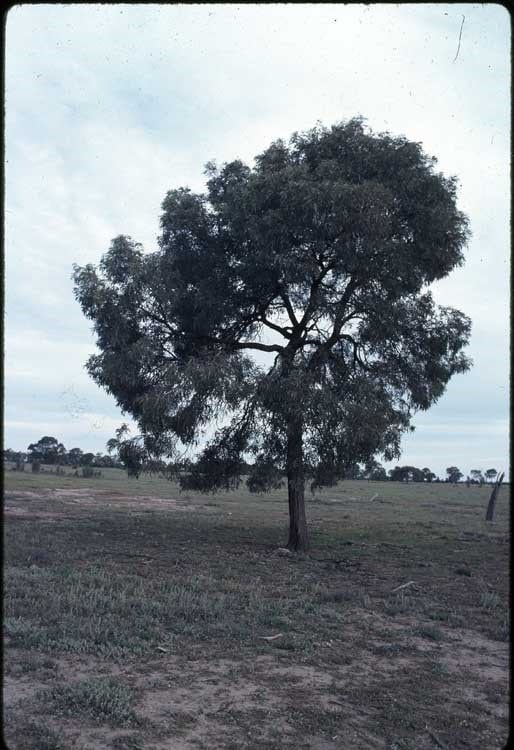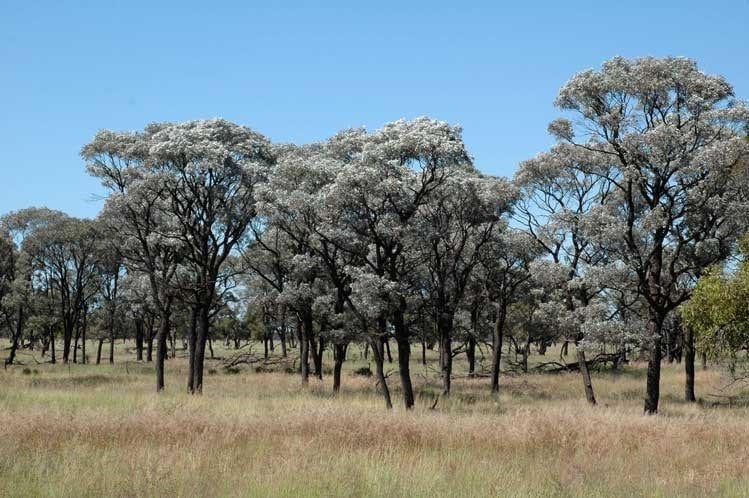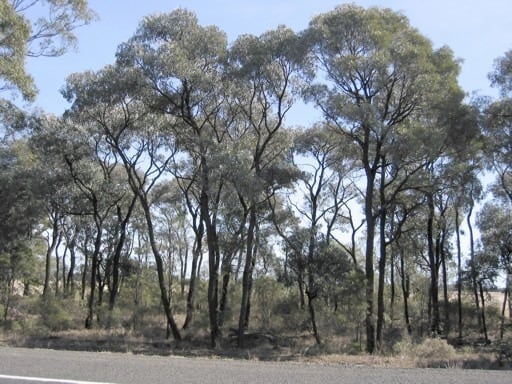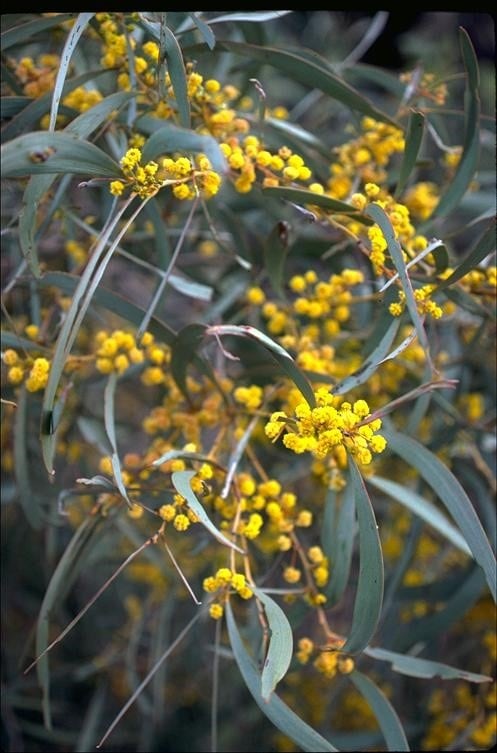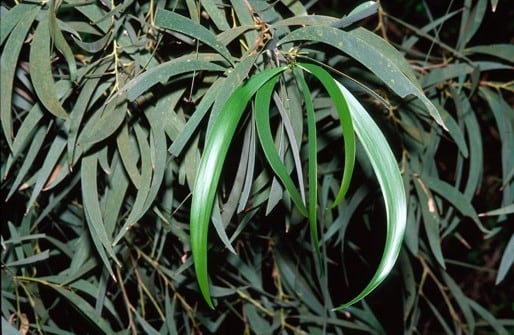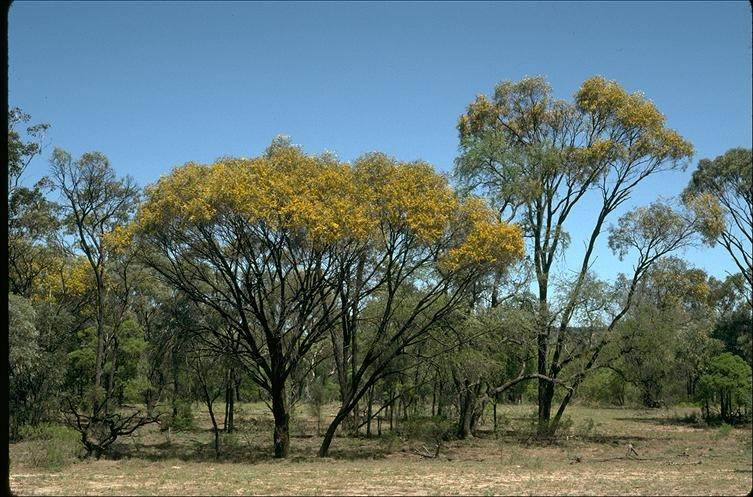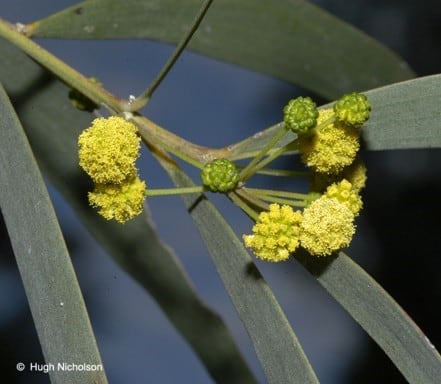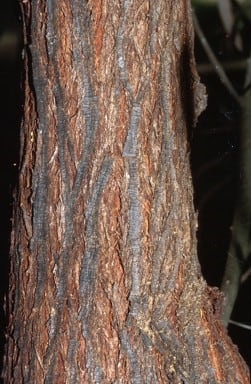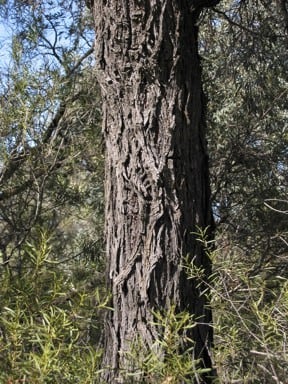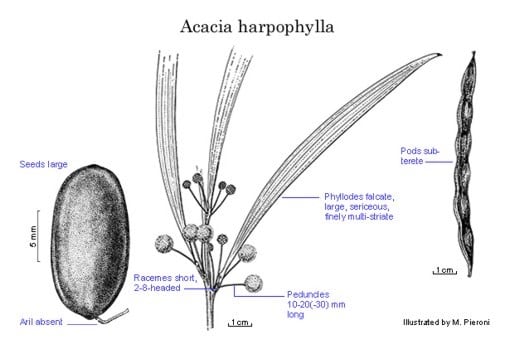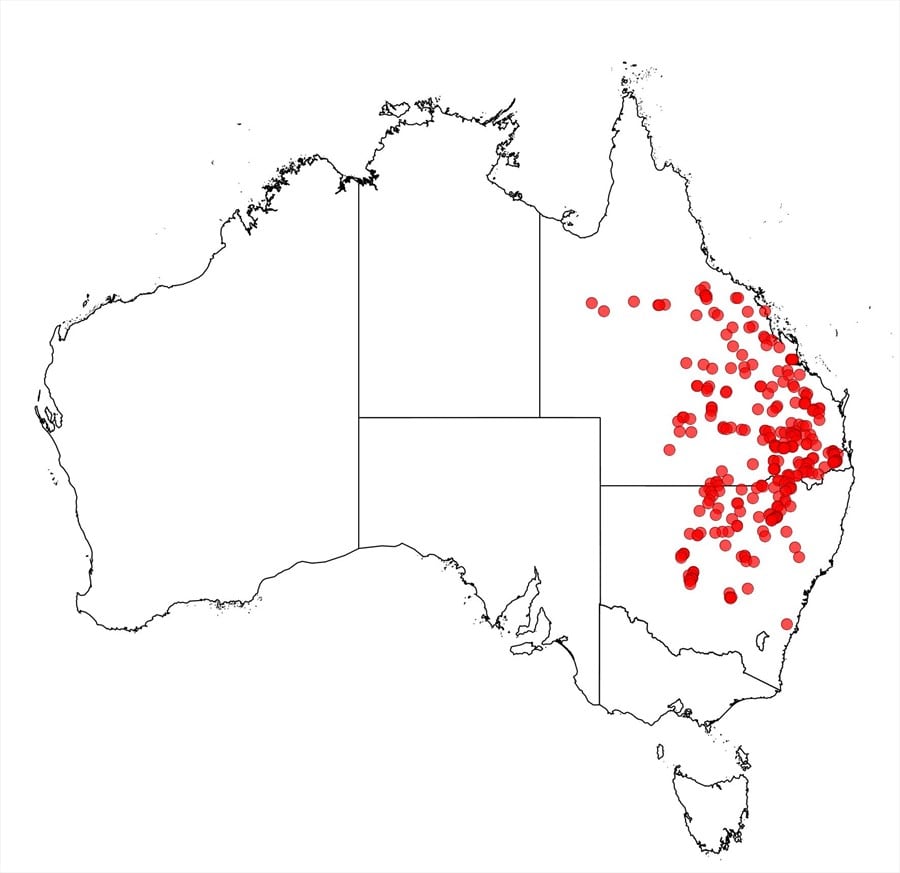Acacia harpophylla F.Muell. ex Benth.
WATTLE
Acacias of Australia
Common Name
Brigalow, Brigalow Spearwood, Orkor
Family
Fabaceae
Distribution
Common in central and coastal Qld S of Richmond and Mackay, extending across the western plains and slopes of northern N.S.W. to Roto and near Willow Tree.
Description
Tree to 25 m high, root-suckering. Bark hard, furrowed, almost black. Branchlets angular at extremities, appressed-puberulous or glabrous. Phyllodes falcate, (7–) 10–20 (–30) cm long and (5–) 7–20 (–30) mm wide, coriaceous, sericeous, silvery grey, with numerous closely parallel nerves of which 3–7 are more prominent than the rest. Inflorescences condensed 2–8-headed racemes, often appearing as axillary clusters; raceme axes 2–10 mm long, appressed-puberulous; peduncles 10–20 (–30) mm long, appressed-puberulous; heads globular, 5–8 mm diam., 15–35-flowered, golden. Flowers 4- or sometimes 5-merous; sepals to 1/2-united. Pods subterete, slightly raised over and constricted between seeds, straight to slightly curved, to 20 cm long, 5–10 mm wide, crustaceous, longitudinally nerved, glabrous. Seeds longitudinal, oblong or broadly elliptic, flat but thick, 10–18 mm long, soft, dull, brown; pleurogram not evident; funicle filiform, exarillate.
Habitat
Forms extensive open-forest communities usually on fertile clay and loamy clay.
Specimens
Qld: Condamine, L.Pedley 2403 (PERTH); 24 km SSE of Toompine, L.Pedley 2456 (PERTH). N.S.W.: 38.1 km S of Boggabilla towards Moree, R.Cumming 2844 (PERTH).
Notes
While the species has been characterised regularly as pentamerous, there is a high proportion of tetramerous flowers in all the material seen. In general, the flowers are 4-merous but with a few 5-merous ones intermixed in the heads; occasionally a head with mostly pentamerous flowers can be observed. Tetramery in A. harpophylla appears not firmly entrenched but in A. argyrodendron, a species of similar general appearance, tetramery is well established.
Because of its suckering habit Acacia harpophylla is generally considered an undesirable species, especially as Brigalow lands are highly productive when cleared.
Most closely related to A. cambagei according to L.Pedley, Austrobaileya 1: 190 (1978).
FOA Reference
Data derived from Flora of Australia Volumes 11A (2001), 11B (2001) and 12 (1998), products of ABRS, ©Commonwealth of Australia
Author
R.S.Cowan
Minor edits by B.R.Maslin & J.Rogers
This identification key and fact sheets are available as a mobile application:
URL: https://apps.lucidcentral.org/wattle/
© Copyright 2018. All rights reserved.

